Install the app
How to install the app on iOS
Follow along with the video below to see how to install our site as a web app on your home screen.

Note: This feature currently requires accessing the site using the built-in Safari browser.
-
New here? Register here now for access to all the forums, download game torrents, private messages, polls, Sportsbook, etc. Plus, stay connected and follow BP on Instagram @buckeyeplanet and Facebook.
You are using an out of date browser. It may not display this or other websites correctly.
You should upgrade or use an alternative browser.
You should upgrade or use an alternative browser.
Space Exploration
- Thread starter BuckeyeNation27
- Start date
5 STAR U-G-A
Legend
Virgin Orbit investing in startups as SPAC merger wraps up
by Jeff Foust — December 27, 2021
https://spacenews.com/virgin-orbit-investing-in-startups-as-spac-merger-wraps-up/
by Jeff Foust — December 27, 2021
https://spacenews.com/virgin-orbit-investing-in-startups-as-spac-merger-wraps-up/
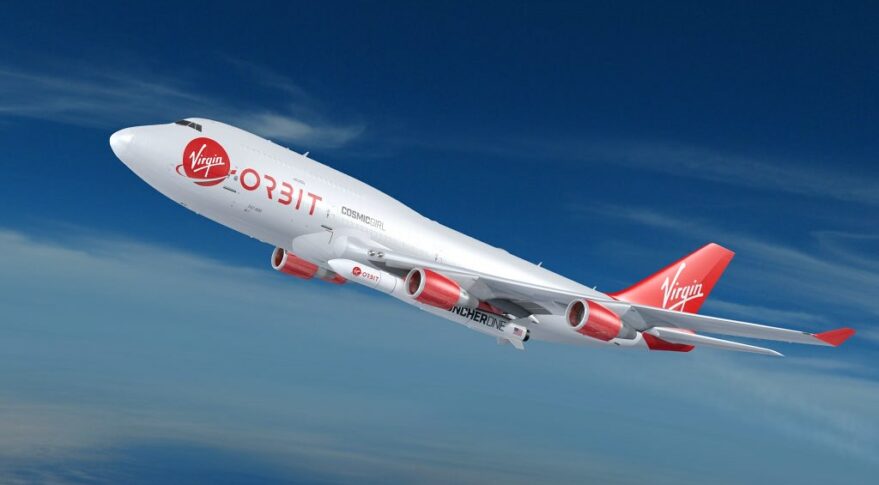
Virgin Orbit operates the air-launch LauncherOne system, which features a two-stage rocket launched from a Boeing 747 aircraft. Credit: Virgin Orbit
SANTA FE, N.M. — As Virgin Orbit prepares to complete its merger with a special purpose acquisition company (SPAC), the launch provider has announced a series of partnerships and investments to diversify its business.
Shareholders in NextGen Acquisition Corp. II are scheduled to vote Dec. 28 on its merger with Virgin Orbit announced Aug. 23. Such votes are usually the final step in closing a SPAC deal, turning Virgin Orbit into a publicly traded company on the Nasdaq.
When the merger was announced, the companies expected the deal to raise up to $483 million, of which $383 million was from the proceeds of the SPAC and $100 million in a private investment in public equity (PIPE) round that included AE Industrial Partners and Boeing as investors. That amount, though, is contingent on the amount of redemptions, where shareholders of the SPAC ask for their money back than hold shares in the merged company.
Virgin Orbit and NextGen announced Dec. 23 that the Virgin Group had agreed to invest up to $100 million as an additional PIPE. The companies said that specific amount “will be determined by the amount of investment, if any, required to satisfy the minimum cash condition as defined in the merger agreement.”
“This investment will ensure that Virgin Orbit has the capital required to go and build upon its incredible foundation and continue its rapid transition into a successful commercial space launch company,” Virgin Orbit founder Richard Branson said in the statement.
The co-founders of NextGen, George Mattson and Gregory Summe, said in the statement that the commitment from the Virgin Group means “we believe we have a clear path to a successful closing of our merger” pending the shareholder vote on Dec. 28.
As the SPAC merger closes, Virgin Orbit has been announcing a series of investments and partnerships with satellite manufacturer and operator startups. Among the announcements was a $30 million Series B investment by Virgin Orbit into Polish company SatRevolution Dec. 14, valuing that company at $150 million. SatRevolution is developing a smallsat constellation of imaging satellites and has launched some of its satellites on Virgin Orbit’s LauncherOne.
Virgin Orbit announced Dec. 15 it is taking a 17.5% stake in Hypersat, a Virginia-based geospatial analytics company developing a constellation of hyperspectral imaging satellites that will be launched by Virgin Orbit. The companies did not disclose the dollar value of that investment.
On Dec. 21, Virgin Orbit said it was taking an equity stake into Horizon Technologies, a British company developing satellites for maritime domain awareness. Virgin Orbit will be the preferred launch provider for Horizon’s satellites.
Those investments join earlier ones Virgin Orbit made in Sky and Space Global, a company working on a constellation of communications satellites, and Arqit, a British quantum computing company. Arqit announced Dec. 23 that it signed a contract for two dedicated LauncherOne launches of satellites that will support its quantum encryption technology.
Those investments, Virgin Orbit executives say, fit into the company’s strategy to expand beyond launch services into broader space services, such as communications and imaging. “As we grew up as a launch company and interacted across the community,” said Dan Hart, chief executive of Virgin Orbit, during a panel discussion at World Satellite Business Week Dec. 15, “we were invited by multiple companies to participate in their business and to take a share.”
That led to the development of a strategy for a satellite solutions business line that includes those investments. “We can get capacity, we can participate with our customers in their business, and we can integrate and create another level of information and capability to deliver to customers,” he said. “We are moving into that satellite solutions part of the space economy while we build up our launches for commercial, national security and civil space.”
“As a launcher, we’re in discussions with every single company, pretty much, out there,” Hart said in a Dec. 22 webinar by IPO Edge about the upcoming merger with NextGen. “We naturally had started to develop relationships and partnerships where we would take either some equity stakes or commercial deals where we would get access to capacity in the systems.”
Virgin Orbit’s near-term emphasis, though, remains on launch with its LauncherOne system. The company’s next mission, called “Above the Clouds,” is now scheduled for no earlier than Jan. 12 from the Mojave Air and Space Port in California after slipping from December. That launch will carry satellites for SatRevolution, Spire Global and the U.S. Defense Department’s Space Test Program.
Hart said Dec. 22 that, after the Above the Clouds mission, he expected Virgin Orbit to perform five to six more launches in 2022. That will include a launch from Spaceport Cornwall in England in mid-2022. He said Virgin Orbit has a goal of 18 launches in 2023.
Upvote
0
3074326
Adios
Last time I saw Virgin in space news, they were dumping their stock they had just pumped. Curious if that’s their priority this time as well.
“A few of us got richer while fucking our investors, let’s see if they’ll fall for it again.”
I wasn’t an investor, but I thought about it pretty hard. Made the right move.
“A few of us got richer while fucking our investors, let’s see if they’ll fall for it again.”
I wasn’t an investor, but I thought about it pretty hard. Made the right move.
Upvote
0
5 STAR U-G-A
Legend
The Most Exciting Things Happening in Space in 2022
Potential highlights include the first orbital launch of SpaceX's megarocket and a surprising number of Moon missions.
By George Dvorsky
https://gizmodo.com/the-most-exciting-things-happening-in-space-in-2022-1848235629
Potential highlights include the first orbital launch of SpaceX's megarocket and a surprising number of Moon missions.
By George Dvorsky
https://gizmodo.com/the-most-exciting-things-happening-in-space-in-2022-1848235629
The inaugural flight of NASA’s Space Launch System
One of the most anticipated events of the year happens next spring, or so we hope. NASA will attempt the inaugural launch of its 332-foot-tall (101 meters) SLS rocket, effectively kickstarting the Artemis era. It’ll be an impressive sight, as the rocket will exert 8.8 million pounds of thrust at liftoff—15% more than NASA’s Saturn V rocket. For this, the Artemis 1 mission, an uncrewed Orion spacecraft will travel 280,000 miles (450,000 km) to lunar orbit and promptly return to Earth.
Launch windows for Artemis one occur in mid-March and mid-April. A successful launch of SLS will set the stage for Artemis 2 (scheduled for 2023), in which a crewed Orion capsule will travel around the Moon and back (basically a repeat of Artemis 1, but with astronauts), and Artemis 3 (scheduled for no earlier than 2025), in which NASA astronauts will land on the Moon for the first time since 1972.
The inaugural orbital flight of SpaceX’s Starship
SpaceX will also attempt the launch of an oversized rocket, likely in either January or February. The reusable Starship megarocket will consist of the Super Heavy Booster 4 and Starship prototype SN20, which, at a combined 394 feet (120 meters) in height, will be the tallest rocket ever built. Launching from SpaceX’s Starbase facility in Boca Chica, Texas, the rocket will enter Earth orbit but complete less than full rotation of the planet. The booster will splash down in the Gulf of Mexico, while the second stage will splash down in the Pacific near Hawaii.
The stacking of a Starship upper stage onto a Super Heavy.
SpaceX CEO Elon Musk said there’s “a lot of risk associated with this first launch,” and he’s candidly predicting a failure. That said, he believes a Starship rocket will reach orbit in 2022 and that upwards of 12 Starship launches could take place over the course of the year. Progress will be important, as SpaceX is developing the rocket to serve as the landing craft for NASA’s upcoming Artemis missions on the Moon.
Other rockets expected to make their maiden flights in 2022 include Arianespace’s Ariane 6, Blue Origin’s New Glenn, United Launch Alliance’s Vulcan Centaur, and Mitsubishi’s H3.
The second uncrewed test of Boeing’s CST-100 Starliner
Speaking of pressure, all eyes will be on Boeing to see if the beleaguered company will finally make progress with its CST-100 Starliner. Boeing is developing the capsule as part of NASA’s Commercial Crew Program, but it’s now years behind schedule. A major setback occurred in October 2021, when Boeing Orbital Flight Test 2 (OFT-2) had to be scrubbed after 13 of 24 oxidizer valves in the spacecraft’s propulsion system failed to open. The inaugural test of Starliner in 2019 was a total mess, making this latest incident all the more embarrassing. Boeing is now seeking to launch Starliner in May 2022, “pending spacecraft readiness and space station availability,” according to NASA.
A helicopter will attempt to catch a falling rocket booster
In 2022, aerospace manufacturer Rocket Lab will attempt to catch a falling Electron rocket booster mid-air and then return it to the mainland for reuse (Rocket Lab performed a successful test of this idea in April 2020). A parachute system will slow the booster during its descent, while a special engagement line on the helicopter will enable it to capture and secure the booster. An auxiliary fuel tank will be added to the helicopter, allowing for an extended journey. Rocket Lab expects to perform this daring catch during the first half of 2022.
To the Moon!!
No humans will reach the Moon in 2022, but the same cannot be said for landers and robots, with the United States, Russia, India, and Japan all preparing for lunar missions in the coming year.
Pittsburgh-based Astrobiotic is planning to send its Peregrine Lunar Lander to the Moon at some point in 2022. The mission is part of NASA’s Commercial Lunar Payload Services (CLPS) initiative, in which the space agency contracts with commercial partners. The lander, equipped with 14 payloads of various types, will launch atop a United Launch Alliance Centaur rocket.
Houston-based Intuitive Machines, another CLPS partner, is currently planning to send its Nova-C lander to the Moon, which it expects to do during the first half of the year with the lift coming from a SpaceX Falcon 9 rocket. Nova-C will deliver 220 pounds (100 kg) worth of goods to the lunar surface.
In July 2019, India’s Chandrayaan-2 mission failed to safely deliver the Vikram lander to the lunar surface. The Indian Space Research Organization will try again during the third quarter of 2022 in what will hopefully be a successful sequel—the Chandrayaan-3 mission. Should India pull it off, it’ll become just the fourth country to successfully land a probe on the Moon (the others being the United States, Russia, and China).
In July 2022, Russia will be sending its Luna 25 lander, also known as the Luna-Glob-Lander, to the southern polar region of the Moon. The purpose of the mission is to analyze the “composition of the polar regolith, and to study the plasma and dust components of the lunar polar exosphere,” according to NASA.
The Smart Lander for Investigating Moon (SLIM) will be Japan’s first mission to the Moon. The purpose of SLIM is to test precision lunar landing capabilities, such as avoiding craters and selecting optimal locations for touchdown. The probe, developed by the Japan Aerospace Exploration Agency (JAXA), is expected to launch at some point in 2022 and land near the Marius Hills Hole—a lunar lava tube entrance.
Another rover for the Red Planet
The European Space Agency’s Rosalind Franklin rover, along with Russia’s Kazachok lander, is scheduled to launch on September 29. Once at Mars, the Rosalind Franklin will collect surface samples and crush them into a fine powder. Its onboard laboratory will then perform detailed chemical, spectral, and physical analyses. The rover’s navigational capabilities should allow it to travel around 328 feet (100 meters) every Martian day, or sol.
Meanwhile, we can expect new insights from NASA’s Curiosity and Perseverance rovers (and perhaps more flights of the Ingenuity helicopter), and also China’s Zhurong rover. NASA’s InSight mission will continue to operate in 2022, but this is likely to be its final year, as the stationary lander is struggling to collect solar power.
Space probes probing space
In August, a SpaceX Falcon Heavy rocket will attempt to deliver NASA’s Psyche probe to space. Its destination is 16 Psyche—a metallic asteroid containing copious amounts of nickel-iron. The asteroid “offers a unique window into the violent history of collisions and accretion that created terrestrial planets,” according to NASA. The mission could shed new light on the composition and age of Psyche’s surface, and the conditions under which it formed. Data from the probe will also be used to create a detailed map of the asteroid’s surface. The Psyche probe is expected to reach the asteroid in January 2026.
The same launch of the Falcon Heavy will deliver two smallsats for NASA, but they’re headed elsewhere. Known as the Janus project, the dual spacecraft will explore two binary asteroids, (175706) 1996 FG3 and (35107) 1991 VH. Daniel Scheeres, the principal investigator of the project and an astronomer at the University of Colorado, says binary asteroids “are one class of objects for which we don’t have high-resolution scientific data,” as all existing observations come from ground telescopes, “which don’t give you as much detail as being up close.” Janus, in addition to furthering our understanding of the early solar system, could also inform planetary defense measures. It’ll take four years for the probes to reach their destinations.
Probes already launched to space will continue to do their work. NASA’s Juno spacecraft will perform a close fly-by of Jupiter’s moon Europa on September 29, after which time its orbital period around the gas giant will be reduced from 43 to 38 days. The Parker Solar Probe, also managed by NASA, will perform four flybys of the Sun in 2022, as it gets increasingly closer to our host star.
In addition, the $10 billion Webb Space Telescope, set to launch on Christmas Day 2021, will travel to its special spot in space—Lagrange Point 2 (an area of space where gravity from the Sun and Earth balance the orbital motion of an object). Once at L2, and after Webb’s instruments are successfully deployed, we’ll finally get to see Webb’s first view of the cosmos.
Astronomical happenings
No total solar eclipse will happen in 2022, but there will be two partial solar eclipses. The first happens on April 30, when the partial eclipse will be visible from the southern portions of South America, and the second will occur on October 25 and be visible to skywatchers in Europe and parts of northern Africa (weather permitting, of course).
A partial lunar eclipse on May 15/16 will be visible in parts of North America and all of South America, while a partial lunar eclipse on November 7/8 will appear primarily over the Pacific Ocean, with western parts of North America and eastern Asia also catching a glimpse.
So buckle up and grab some kool-aid—looks like we’ve got another amazing year in space ahead.
Upvote
0
5 STAR U-G-A
Legend
Seen from outer space (https://www.spaceweather.com/):
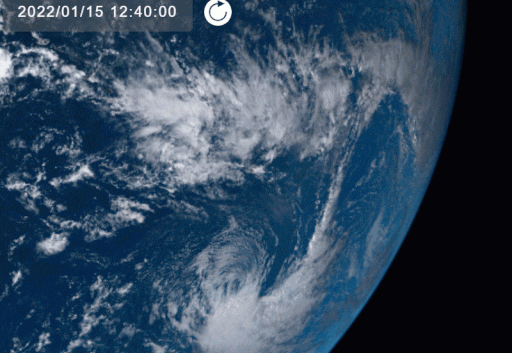
UNDERSEA VOLCANIC ERUPTION SEEN FROM SPACE: An undersea volcano erupted today, Jan. 15th, near the Pacific island of Tonga, sending large tsunami waves crashing on shore and people rushing to higher ground. Japan's Himawari-8 weather satellite recorded this dramatic video:

It shows a huge plume of ash, steam and gas rising like a mushroom above the blue Pacific waters. "Not only that, but also an atmospheric shock wave can be seen," points out M. Shiraishi, who created the animation for the Space Weather Gallery. "The terminator between daylight and night caught up with the shock wave. This means the terminator runs faster than the speed of sound."
The shockwave was recorded as a sudden uptick in air pressure as far away as Alaska, Belize and multiple locations in Florida. The global wave is expected to converge on southern Algeria, giving an especially strong signal there.
High-altitude balloon and satellite measurements indicate that the exhaust plume has reached the stratosphere, as high as 60,000 feet. Ash and sulfurous compounds spreading through the stratosphere could create unusual sunsets in the evenings ahead. Stay tuned for sightings.
Upvote
0
5 STAR U-G-A
Legend
That's fuckin trippy
It's like a sci fi movie.
I have to say, though, this quote caught my eye: "The terminator between daylight and night caught up with the shock wave. This means the terminator runs faster than the speed of sound."
What comes to mind is "does the terminator run faster than Sergio Kindle?"
Upvote
0
5 STAR U-G-A
Legend
Sun Spot news from Spaceweather.com:
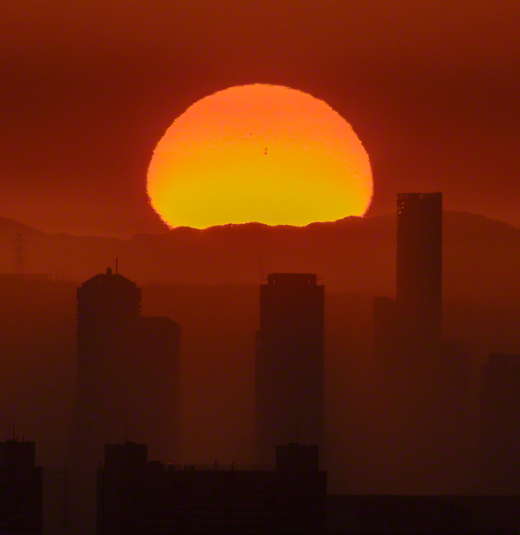

SUNSPOT SUNRISE: Solar Cycle 25 is intensifying. You can see it in the sunrise. "I photographed four sunspot groups when the sun came up this morning," reports Daisuke Tomiyasu, who sends this picture from Higashinada, Kobe, Japan
"Thin clouds drifting over the mountains dimmed the sun enough for this unfiltered photos at 7:12 a.m. local time," says Tomiyasu.
Warning: Even when the sun is dimmed by low-hanging clouds or haze, it can still be dangerously bright, especially when magnified by unfiltered optics. If you chose to photograph the low sun, as Tomiyasu did, use the camera's LCD screen for safe viewfinding. Never look at the sun through the eyepiece of an unfiltered camera.
Upvote
0
5 STAR U-G-A
Legend
Space News: Citizen scientists spot jupiter-like planet in NASA TESS data
ELIZABETH LANDAU
https://www.lakeconews.com/news/714...ts-spot-jupiter-like-planet-in-nasa-tess-data
ELIZABETH LANDAU
https://www.lakeconews.com/news/714...ts-spot-jupiter-like-planet-in-nasa-tess-data
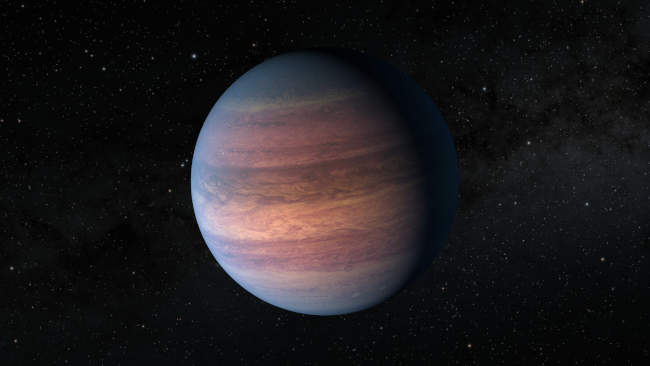
This illustration depicts a Jupiter-like exoplanet called TOI-2180 b. It was discovered in data from NASA's Transiting Exoplanet Survey Satellite. Credits: NASA/JPL-Caltech/R. Hurt.
Tom Jacobs of Bellevue, Washington, loves treasure hunts.
Since 2010, the former U.S. naval officer has participated in online volunteer projects that allow anyone who is interested — “citizen scientists” — to look through NASA telescope data for signs of exoplanets, planets beyond our solar system.
Now, Jacobs has helped discover a giant gaseous planet about 379 light-years from Earth, orbiting a star with the same mass as the Sun.
The Jupiter-size planet is special for astronomers because its 261-day year is long compared to many known gas giants outside our solar system. The result also suggests the planet is just a bit farther from its star than Venus is from the Sun.
The finding was published in the Astronomical Journal and presented at an American Astronomical Society virtual press event on Jan. 13.
Uncovering this planet and pinning down its size and mass required a large collaboration between professional astronomers and citizen scientists like Jacobs.
To track the planet, they engaged in “a global uniting effort, because we all need to go after it together to keep eyes on this particular planet,” said Paul Dalba, astronomer at the University of California, Riverside, and lead author of the study.
“Discovering and publishing TOI-2180 b was a great group effort demonstrating that professional astronomers and seasoned citizen scientists can successfully work together,” Jacobs said. “It is synergy at its best.”
How the discovery happened
The signature for the newly discovered planet was hiding in data from NASA’s Transiting Exoplanet Survey Satellite, or TESS. Using TESS data, scientists look for changes in brightness of nearby stars, which could indicate the presence of orbiting planets.
Jacobs is part of a group of citizen scientists who look at plots of TESS data, showing the change in a star’s brightness over time, in search of new planets.
While professional astronomers use algorithms to scan tens of thousands of data points from stars automatically, these citizen scientists use a program called LcTools, created by Alan R. Schmitt, to inspect telescope data by eye.
That’s why Jacobs’ group, which includes several citizen scientists and two veteran astronomers, calls themselves the Visual Survey Group. Many of them met while working on Planet Hunters, a NASA-funded citizen science project through Zooniverse that focused on data from NASA’s Kepler spacecraft.
On Feb. 1, 2020, Jacobs happened to notice a plot showing starlight from TOI-2180 dim by less than half a percent and then return to its previous brightness level over a 24-hour period, which may be explained by an orbiting planet that is said to “transit” as it passes in front of the star from our point of view.
By measuring the amount of light that dims as the planet passes, scientists can estimate how big the planet is and, in combination with other measurements, its density. But a transit can only be seen if a star and its planet line up with telescopes looking for them.
A graph showing starlight over time is called a “light curve.” The Visual Survey Group alerted two professional scientist collaborators — Paul Dalba at the University of California, Riverside, and Diana Dragomir, assistant professor at the University of New Mexico, that this light curve was potentially interesting.
“With this new discovery, we are also pushing the limits of the kinds of planets we can extract from TESS observations,” Dragomir said. “TESS was not specifically designed to find such long-orbit exoplanets, but our team, with the help of citizen scientists, are digging out these rare gems nonetheless.”
Computer algorithms used by professional astronomers are designed to search for planets by identifying multiple transit events from a single star. That’s why citizen scientists’ visual inspection is so useful when there is only one transit available. Since this is the only instance of the TOI-2180 b star dimming in this dataset, it is called a “single transit event.”
“The manual effort that they put in is really important and really impressive, because it's actually hard to write code that can go through a million light curves and identify single transit events reliably,” Dalba said. “This is one area where humans are still beating code.”
But how could the team rule out other explanations for the brief dip in starlight? Could they be sure they had found a planet? They would need follow-up observations.
Fortunately, Dalba was able to recruit the Automated Planet Finder Telescope at Lick Observatory in California. “I use that telescope to measure the wobble of the star to then determine how massive this planet is, if it is a planet at all,” he said.
The research team also used the Keck I telescope at the W. M. Keck Observatory in Hawaii to perform some of these measurements when Lick Observatory was threatened by wildfires.
With 27 hours of observations spread over more than 500 days, Dalba and colleagues observed the planet’s gravitational tug on the star, which allowed them to calculate the planet’s mass and estimate a range of possibilities for its orbit.
Still, they wanted to observe the planet’s transit when it came back around to confirm the orbit. Unfortunately, finding a second transit event was going to be difficult because there was so much uncertainty about when the planet would cross the face of its star again.
Dalba pressed on, and organized an observing campaign including both professional astronomers and citizen scientists using telescopes at 14 sites across three continents in August 2020. To support the campaign, Dalba camped for five nights in California’s Joshua Tree National Park and looked for the transit with two portable amateur telescopes. The collaborative effort yielded 55 datasets over 11 days.
Ultimately, none of these telescopes detected the planet with confidence. Still, the lack of a clear detection in this time period put a boundary on how long the orbit could be, indicating a period of about 261 days. Using that estimate, they predict TESS will see the planet transit its star again in February 2022.
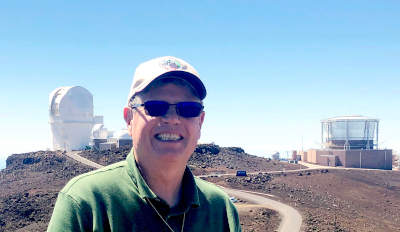
Tom Jacobs, a citizen scientist who collaborates with professional scientists to look for exoplanets, at the Haleakalā High Altitude Observatory Site in Hawaii. Credits: Tom Jacobs.
About the planet
TOI-2180 b is almost three times more massive than Jupiter but has the same diameter, meaning it is more dense than Jupiter. This made scientists wonder whether it formed in a different way than Jupiter.
Another clue about the planet’s formation could be what’s inside it. Through computer models they determined that the new planet may have as much as 105 Earth masses worth of elements heavier than hydrogen and helium. “That’s a lot,” says Dalba. “That’s more than what we suspect is inside Jupiter.”
Astronomers still have much to learn about the range of planets that are out there. About 4,800 exoplanets have been confirmed, but there are thought to be billions of planets in our galaxy. The new finding indicates that among giant planets, some have many more heavy elements than others.
In our solar system, gigantic Jupiter orbits the Sun every 12 years; for Saturn, a “year” is 29 years. We don’t have giant planets like TOI-2180 b between the Earth and Sun.
But outside the solar system, astronomers have found dozens of exoplanets that are even bigger than Jupiter and orbit much closer to their stars, even closer than the orbit of Mercury.
With an average temperature of about 170 degrees Fahrenheit, TOI-2180 b is warmer than room temperature on Earth, and warmer than the outer planets of our solar system including Jupiter and Saturn. But compared to the array of transiting giant exoplanets that astronomers have found orbiting other stars, TOI-2180 b is abnormally chilly.
“It's a nice stepping stone in between most giant exoplanets we’ve found, and then really cold Jupiter and Saturn,” Dalba said.
What’s next
When TESS observes the star again in February, Dalba and the citizen scientists are eager to get the data and dive back in. If they find the planet’s signature, confirming the 261-day period, that would give more meaning to the data from their global campaign to find it in 2020.
NASA’s James Webb Space Telescope, which launched on Dec. 25, could potentially observe this planet and its atmosphere. But there’s another reason Dalba is excited about Webb’s capabilities. Given that in our own solar system, Jupiter has rings and moons, Webb could be used to look for the presence of small objects orbiting TOI-2180 b.
So far, no rings or moons have been found outside of our solar system with certainty, but one reason could be that many exoplanets are found very close to their star, whose gravity might strip such objects away.
TOI-2180 b, located at a farther distance from its host star, might present an interesting opportunity for such a search. “I think this is a fun system for that later on in the future,” Dalba said.
When he’s not pursuing his planet-hunting hobby, Jacobs, the citizen scientist, works with nonprofits that help people with disabilities find employment in their communities.
The Visual Survey Group members “devote many hours each day surveying the data out of pure joy and interest in furthering science,” said Jacobs. Collectively, the team has co-authored more than 68 peer-reviewed science papers, including the discovery of transiting “exocomets” or comets outside the solar system crossing the face of a star.
“We love contributing to science,” Jacobs said. “And I love this type of surveying, knowing that one is in new undiscovered territory not seen by any humans before.”
NASA has a wide variety of citizen science collaborations across topics ranging from Earth science to the Sun to the wider universe. Anyone in the world can participate. Check out the latest opportunities at www.science.nasa.gov/citizenscience.
TESS is a NASA Astrophysics Explorer mission led and operated by MIT in Cambridge, Massachusetts, and managed by NASA's Goddard Space Flight Center. Additional partners include Northrop Grumman, based in Falls Church, Virginia; NASA’s Ames Research Center in California’s Silicon Valley; the Center for Astrophysics | Harvard & Smithsonian in Cambridge, Massachusetts; MIT’s Lincoln Laboratory; and the Space Telescope Science Institute in Baltimore. More than a dozen universities, research institutes, and observatories worldwide are participants in the mission.
The National Science Foundation Astronomy and Astrophysics Postdoctoral Fellowship Program contributed support to this study.
Elizabeth Landau works for NASA Headquarters.
Upvote
0
Trevi
Hall of Fame
In case anyone is looking for something to do tonight.
EarthSky | Huge asteroid will pass Earth safely January 18
A large stony asteroid will safely pass Earth on January 18, 2022. Its estimated size is around 3,280 feet (about 1 km or .6 of a mile), around 2 1/2 times the height of the Empire State Building. As you can see from this asteroid’s label – (7482) 1994 PC1 – we’ve known about it since 1994. It is classified as a Potentially Hazardous Asteroid due to its size and relatively close flybys of our planet. An asteroid of this size strikes Earth approximately every 600,000 years. But we have nothing to fear from 1994 PC1 at its 2022 close approach. And … a plus … amateur astronomers with backyard telescopes might catch a glimpse of it as it sweeps past.
EarthSky | Huge asteroid will pass Earth safely January 18
Upvote
0
5 STAR U-G-A
Legend
Agricultural science in orbit
Outer space offers plant breeders some curious advantages
Radiation and microgravity may give rise to better crops
https://www.economist.com/science-a...ant-breeders-some-curious-advantages/21807014
Outer space offers plant breeders some curious advantages
Radiation and microgravity may give rise to better crops
https://www.economist.com/science-a...ant-breeders-some-curious-advantages/21807014

Jan 8th 2022
Plants grown in orbit, and thereby deprived of the comforting directional pull of Earth’s gravity, typically struggle to distinguish up from down. This makes it harder for them to carry water and nutrients around themselves. It also fouls up their ability to draw carbon dioxide needed for photosynthesis from the air. The stress caused by all this seems to increase the level of genetic mutation induced by a given amount of radiation—of which there is much in space, in the form of cosmic rays and effluvia from the sun. And mutations are the lifeblood of plant breeders.
On Earth, breeders induce them by exposing plants and seeds to radioactive isotopes, x-rays and so on. Most are harmful. But some hit the jackpot, conferring properties like drought resistance, blight resistance or shorter stems, favoured by farmers, and sweeter flavours, brighter colours or thinner peel, favoured by consumers. Plucked from their progenitors by selective breeding and added to cultivars, such mutations are worth millions. Mutagenesis, then, is an important business.
And it is one that StarLab Oasis, a firm in Abu Dhabi that was spun out of a Texan enterprise called Nanoracks in 2021, reckons it may be able to perform better. As the firm’s name hints, the plan is to do the job using the natural radiation of space. Its researchers intend to start sending payloads of seeds to the International Space Station (iss) later this year. Once there, those seeds will be cultivated by astronauts on board the station and allowed to grow and breed.
Subsequent generations of seeds resulting from this breeding will be returned to Earth and germinated in StarLab Oasis’s greenhouses. They will then be subjected to ills including drought, pathogens, poor soil, excessive heat and voracious insects. Those which best endure these assaults will be bred from in their turn, in the hope that something valuable emerges.
A cut-down version of this approach, launching packets of seeds on satellites and returning them to Earth after a period of exposure to cosmic radiation, has had some success. China says it has conducted more than 30 such missions, and that these have yielded at least 200 improved crop varieties. StarLab Oasis’s boss, Allen Herbert, believes, however, that his firm is the first private organisation set up to take this route and, in particular, actually to raise plants in space for the purpose.
Mutagenesis is not, moreover, the only facility offered by space which may be of interest to botanists. The stress responses themselves also yield useful information.
Robert Ferl and Anna-Lisa Paul are joint heads of the Space Plants Lab at the University of Florida, Gainesville, which already has experiments on board the iss. These are studying how Arabidopsis thaliana, a species of cress that is botany’s equivalent of animal scientists’ mice and fruit flies, responds to the rigours of orbital free fall. The answer is that the plants switch on some genes which would normally remain dormant, while switching off others that would normally be active.
In particular, as Dr Ferl, Dr Paul and their colleagues have found, spacefaring specimens frequently divert resources away from tasks, such as strengthening the rigidity of cell walls, which are less pertinent when the directional pull of gravity is missing. Conversely, in a bid better to determine which way is “up”, they become more sensitive to light. As Dr Paul puts it, plants “reach into their metabolic toolbox” to cope with the unusual stress. In doing so they pull out tools that may be used rarely on Earth, but which plant breeders might be able to deploy in advantageous ways by improving gas exchange, inducing better root growth or reducing stem size.
The iss will not, though, last for ever. And Nanoracks is involved in a proposal to replace it. As the name of its progeny in Abu Dhabi also suggests, this is Starlab, a putative crewed space station planned by a group led by Lockheed Martin.
Starlab is intended to be a commercial enterprise, with plant breeding as one of its sources of revenue. It is not planned to go into orbit until 2027, and the schedule for such projects is in any case almost always optimistic. But if it does get off the ground, the idea that one of its modules might, in effect, be a plant-growing annex to the main living space, akin to a conservatory on Earth, has a pleasing domesticity to it. Perhaps the crew will relax there after a hard day’s work. ■
Upvote
0


